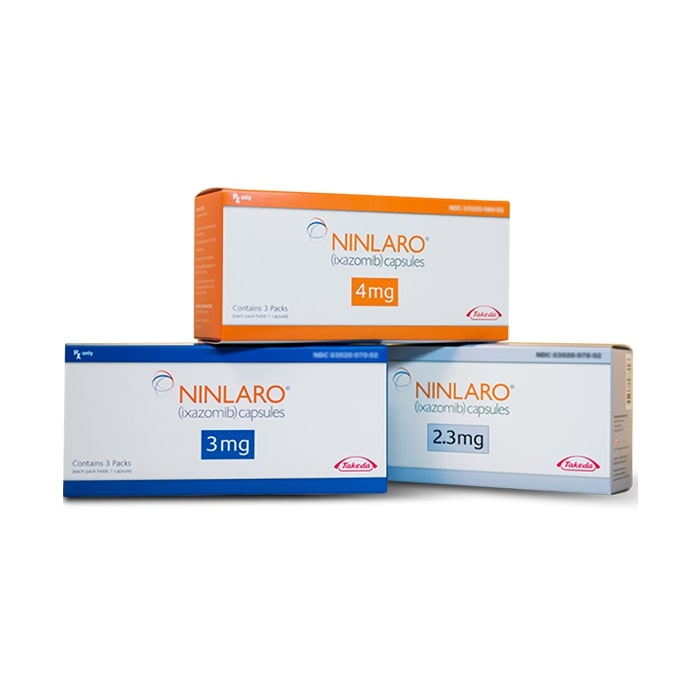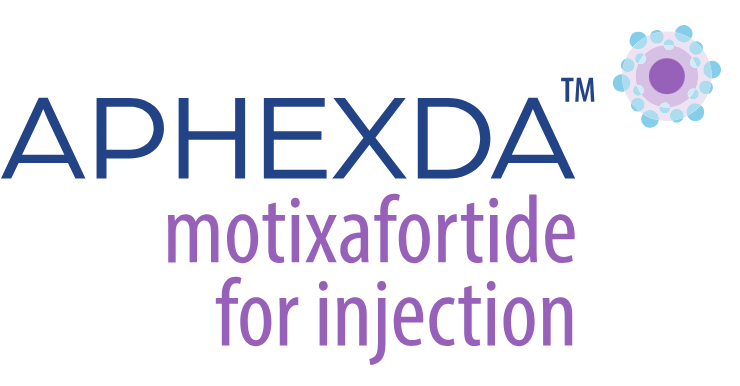Ninlaro (ixazomib) vs Aphexda (motixafortide)
Ninlaro (ixazomib) vs Aphexda (motixafortide)
Ninlaro (ixazomib) is an oral proteasome inhibitor used in combination with other medications to treat multiple myeloma, a type of blood cancer, and works by interfering with the breakdown of proteins in cancer cells, leading to their death. Aphexda (motixafortide), on the other hand, is a CXCR4 antagonist that is being investigated for enhancing stem cell mobilization in the treatment of various hematological malignancies and solid tumors; it is not yet approved for routine clinical use. When deciding between these medications, it is important to consider the specific type of cancer being treated, the stage of disease, the patient's overall health, and the medication's approval status and evidence for efficacy, as they have different mechanisms of action and are used in different contexts.
Difference between Ninlaro and Aphexda
| Metric | Ninlaro (ixazomib) | Aphexda (motixafortide) |
|---|---|---|
| Generic name | Ixazomib | Motixafortide |
| Indications | Multiple myeloma | Currently under investigation, potential use in stem cell mobilization for autologous transplantation in multiple myeloma and other conditions |
| Mechanism of action | Proteasome inhibitor | CXCR4 antagonist |
| Brand names | Ninlaro | Aphexda |
| Administrative route | Oral | Subcutaneous injection |
| Side effects | Diarrhea, constipation, thrombocytopenia, peripheral neuropathy, nausea, vomiting, back pain, fatigue | Not fully characterized; potential side effects may include gastrointestinal symptoms, injection site reactions, and bone pain |
| Contraindications | Hypersensitivity to ixazomib or any of its excipients | Not fully established; likely hypersensitivity to motixafortide or any of its excipients |
| Drug class | Proteasome inhibitor | CXCR4 antagonist |
| Manufacturer | Takeda Pharmaceutical Company | BioLineRx |
Efficacy
Ninlaro (Ixazomib) Efficacy in Multiple Myeloma
Ninlaro (ixazomib) is an oral proteasome inhibitor approved by the U.S. Food and Drug Administration (FDA) for use in combination with lenalidomide and dexamethasone for the treatment of patients with multiple myeloma who have received at least one prior therapy. Clinical trials have demonstrated that ixazomib, when added to lenalidomide and dexamethasone, can significantly improve progression-free survival (PFS) in patients with relapsed or refractory multiple myeloma. The pivotal phase 3 trial, known as the TOURMALINE-MM1 study, showed that the addition of ixazomib to the regimen resulted in a median PFS of 20.6 months compared to 14.7 months in the placebo group, highlighting its efficacy in this patient population.
Moreover, ixazomib has shown a manageable safety profile, which is critical for patients undergoing long-term treatment. The convenience of oral administration also offers an advantage in terms of patient compliance and quality of life compared to intravenous therapies. However, the efficacy of ixazomib can be influenced by various factors, including the patient's prior treatment history, cytogenetic risk profile, and the presence of comorbid conditions.
Aphexda (Motixafortide) Efficacy in Multiple Myeloma
Aphexda (motixafortide), also known as BL-8040 or plerixafor, is a CXCR4 antagonist that has been investigated for its potential to enhance the efficacy of treatments for multiple myeloma. Motixafortide is designed to mobilize cancer cells from the bone marrow into the bloodstream, where they may be more susceptible to chemotherapy and other treatments. While Aphexda is not yet approved for the treatment of multiple myeloma, it has been studied in clinical trials for its ability to improve the mobilization of hematopoietic stem cells for autologous transplantation in multiple myeloma patients.
Early-phase clinical studies have suggested that motixafortide, when used in conjunction with granulocyte colony-stimulating factor (G-CSF), can increase the number of stem cells collected for transplantation compared to G-CSF alone. This could potentially translate to better transplantation outcomes and improved survival rates. However, further research is required to fully establish the efficacy and safety profile of motixafortide in the treatment of multiple myeloma, and its use remains investigational at this time.
Regulatory Agency Approvals
Ninlaro
-
European Medical Agency (EMA), European Union

-
Food and Drug Administration (FDA), USA

-
Health Canada

-
Pharmaceuticals and Medical Devices Agency (PMDA), Japan

-
Therapeutic Goods Administration (TGA), Australia

Aphexda
-
Food and Drug Administration (FDA), USA

Access Ninlaro or Aphexda today
If Ninlaro or Aphexda are not approved or available in your country (e.g. due to supply issues), you can access them via Everyone.org.
How it works

Make an enquiry
Choose the medicine you want to buy, answer a couple of questions, and upload your prescription to speed things up. We’ll get back to you within 24 hours.


Make an enquiry
Choose the medicine you want to buy, answer a couple of questions, and upload your prescription to speed things up. We’ll get back to you within 24 hours.


Breeze through the paperwork
We'll guide you through the required documents for importing unapproved medicine, ensuring you have all the necessary information.


Get a personalized quote
We’ll prepare a quote for you, including medicine costs and any shipping, administrative, or import fees that may apply.


Receive your medicine
Accept the quote and we’ll handle the rest - sourcing and safely delivering your medicine.

Some text on this page has been automatically generated. Speak to your physician before you start a new treatment or medication.
Let's talk
If you have any questions, call us or send us a message through WhatsApp or email:
Contact us




